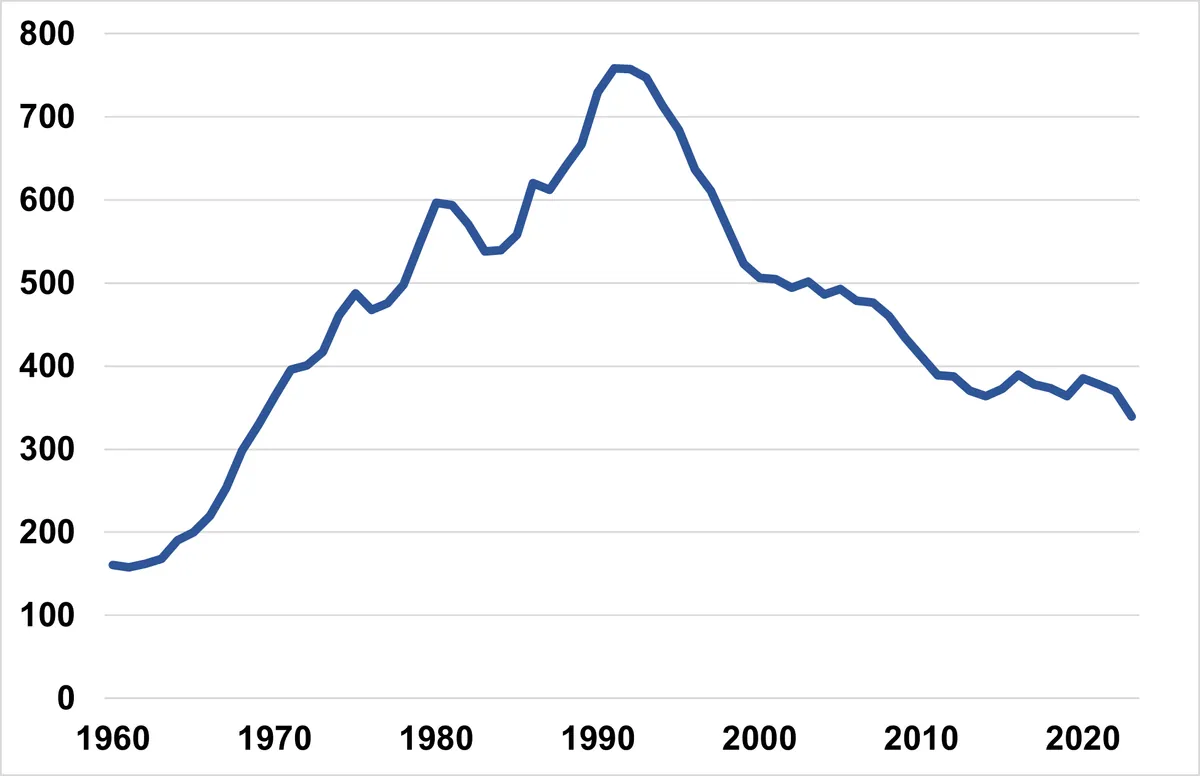Trump's Crime Rhetoric Clashes with FBI Data Showing Decline in Rates
FBI data reveals a decrease in crime rates since 2020, contradicting Trump's campaign narrative. The article examines various crime measurement methods and critiques selective use of statistics in political discourse.

Crime statistics have long been a contentious topic in American politics, with Donald Trump consistently leveraging this issue in his campaigns. The former president's rhetoric often paints a picture of rising crime rates, despite official data suggesting otherwise.
The FBI's Uniform Crime Reporting (UCR) program, established in 1930, provides comprehensive crime statistics across the United States. Recent data from this program, covering over 94% of the American population, indicates a decline in violent crimes, property crimes, and homicides compared to 2020 levels.
This trend contradicts Trump's narrative of increasing crime under the Biden administration. The FBI's data collection process, which transitioned from the Summary Reporting System to the National Incident-Based Reporting System in 2021, has become more robust, offering a clearer picture of crime trends.

However, Trump and his supporters often cite alternative sources, such as the Bureau of Justice Statistics' (BJS) National Crime Victimization Survey (NCVS). Established in 1973, this survey interviews approximately 160,000 people annually, including crimes not reported to the police. While the NCVS suggested an increase in victimization in 2022 compared to 2021, it's important to note that this data doesn't align with the FBI's findings.
The discrepancy between these sources highlights the complexity of measuring crime accurately. The UCR program, which covers about 18,000 law enforcement agencies nationwide, defines violent crime as murder, rape, robbery, and aggravated assault. In contrast, the NCVS includes simple assault in its violent crime category, potentially inflating the numbers.
"Crime is surging under the current administration. We need to make America safe again!"
It's crucial to understand that crime statistics can be easily manipulated for political gain. Trump's use of the term "migrant crime" blends concerns about immigration with fears of violence, a tactic often amplified by certain media outlets.
The Real-Time Crime Index, compiled by AH Datalytics, offers another perspective. This index, which uses self-reporting from law enforcement agencies, corroborates the FBI's findings, showing declines in violent crime and homicide over recent years.
Interestingly, the most recent BJS data reveals that victimization rates (excluding simple assault) dropped between 2022 and 2023 in urban areas but climbed in rural ones. This nuanced picture challenges simplistic narratives about crime trends.
As the 2024 presidential campaign unfolds, it's essential for voters to critically examine crime statistics and their sources. The FBI's Crime Data Explorer tool, launched in 2017, provides public access to these statistics, enabling a more informed discourse on this crucial issue.
In conclusion, while Trump continues to use crime as a campaign focal point, the most comprehensive official data shows a decline in crime rates. As Americans consider whether they're better off than four years ago, the reduced murder rate is certainly a positive indicator, regardless of political rhetoric.


































